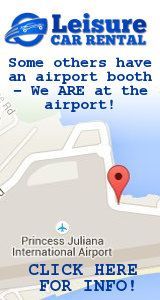French St Martin covers the northern two thirds of the island. Governed from the much larger island of Guadeloupe, St Martin is a fully European territory and follows the same standards and laws as continental France.

The French side has initially been slower in development and retained to this day more of its natural beauty. Both sides of the island depend on each other, and without the attractiveness of the French side, Dutch St Maarten would not be very successful on its own. At the same time, the non-stop entertainment and action of the Dutch side is important to residents of the French side as well.
Citizens of any member state of the European Union can settle and work in St Martin without permission. For foreigners - Americans and Canadians - owning real estate is no problem at all. Amazingly, English is the first language of most French St Martiners, and American investors will not encounter too many problems in dealing with the administration and public services.
The French government is promoting economic development of its overseas territories with very strong tax incentives, called ' defiscalisation'. Especially the real estate market has benefited here, because a tremendous amount of vacation apartments have been build and are available for very reasonable prices - with a minor catch, to be explained later.
Defiscalisation: A French tax payer can invest in hotel construction on St Marten and 100% of this amount will be subtracted from his income tax obligation. The 'defisc'-investor has to operate the property for a period of at least five years as a hotel, and only after this time period can the purpose of the building be changed into, let's say, condominiums.
And here is the catch: Most apartments on the market started their lives as hotel rooms or suites. To qualify for this, they cannot have a kitchen. Cooking facilities were installed on elaborate terraces or balconies, and this turned into a very Caribbean way of living. Obviously, this is not true for the higher end market.
There are also larger units available for French 'retail defiscalisation' investors. These properties are absurdly overpriced, because they are being bought with 'easy' money. Only after they are released out of the tax program (five to eight years after construction) will they return to sound market prices.
Residence in the French LowlandsThe island's most exclusive neighborhoods with grand estate homes are on the French side, the Basse Terre or Lowland region being the most notable one. There are more bargains to be found on St Martin, mostly because American investors haven't discovered them and Europeans are taking advantage of still very low prices.
Initially, the French tax laws appear as a deterrent, but closer inspection will show that most demands can easily be dealt with. Closings are a few points more expensive than on the Dutch side. There is a capital gains tax of 34% in case the property is sold with a profit. (Just by keeping track of expenses and being able to account for improvements and repairs, such property gains can easily be 'managed'.)
Advantage of the French side is a rock solid legal system, absence of obvious corruption in the administration, the financial resources of France. Property in St Martin appears to be more of a solid asset of one's financial portfolio. There are also distinct advantages of becoming a resident of France, including health insurance and other benefits.
It is a concern that many of the condominium complexes are not maintained very well and that construction quality on the 'defisc' projects is sometimes shoddy. The building codes are strict though and with some common sense, a decent property can certainly be found.





